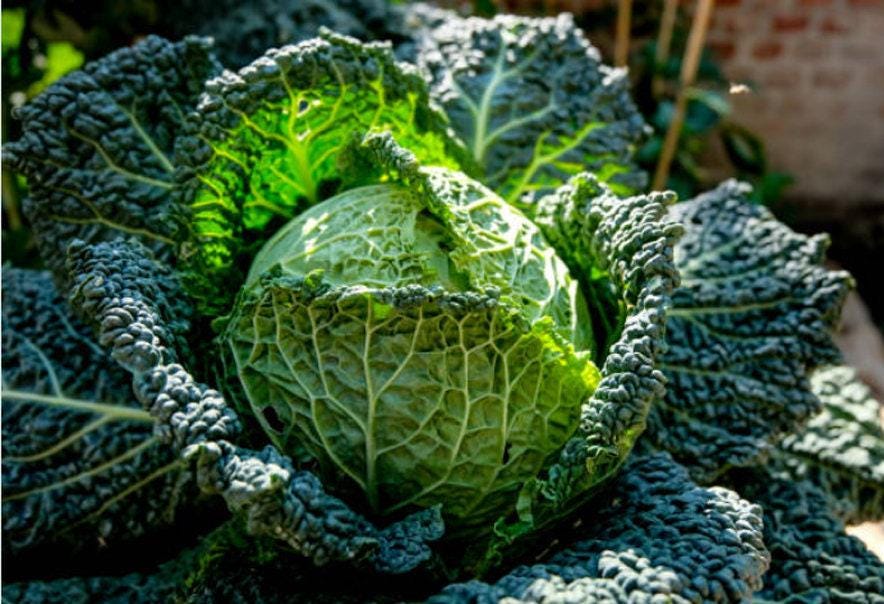Savoy cabbage is one of the best for cooking. Their flavorful, crinkled leaves stem from a variety that dates back to medieval Italy. Flattened, round 6-8 lb heads are white inside, wrapped on the outside with well-savoyed, blue-green leaves. Good heat tolerance, and makes especially beautiful heads in the fall. Plant produces a very delicious and sweet cabbage.
Used fresh to make coles, or steamed, used in stir fry, or used to make sauerkraut. Plant is hardy and easy to grow. Suitable for home gardens and market growers. It is ready in 90 days and prefers full sun.
Savoy cabbages originated in the Savoy region, an ancient duchy in the heart of the Alps and on the borders of Italy, France, and Switzerland. The earliest records date this distinctive variety of cabbage back to the 1500s. This type of cabbage is an essential ingredient in traditional Italian minestrone.
~ planting ~
Start your Savoy Cabbage seeds inside 8-12 weeks before the last spring frost, planting them in rich soil 1/2 inch deep and 2 inches apart. Because the first crop of cabbage should mature before the heat of summer, plant your winter cabbage seedlings about 4 weeks before the last expected frost; set them 12-18" apart in rows 3-4' apart, burying the stems about halfway up.
For a fall crop, direct sow or transplant seedlings in midsummer. For companion planting benefits, plant Savoy Cabbage seeds with aromatic herbs or potatoes; avoid planting them with tomatoes or pole beans. Herbs such as thyme, peppermint, sage, and rosemary will repel the destructive white cabbage moth.
~ growing ~
If hard frosts come, cover the young plants. Mulch around them to regulate soil temperature, and keep the soil moisture even to prevent the cabbages from splitting.
~ harvesting ~
Harvest heads as soon as they are well developed, firm, and solid when squeezed. Cut off heads at base with a sharp knife. Discard outermost leaves. Cabbages left in the ground beyond maturity are more subject to disease and splitting.
To delay harvest and prevent the heads from splitting while still in the ground, give the heads a sharp 1/4 turn. This will break the feeder root, but allows smaller roots to continue to nourish the plant until harvested.



















